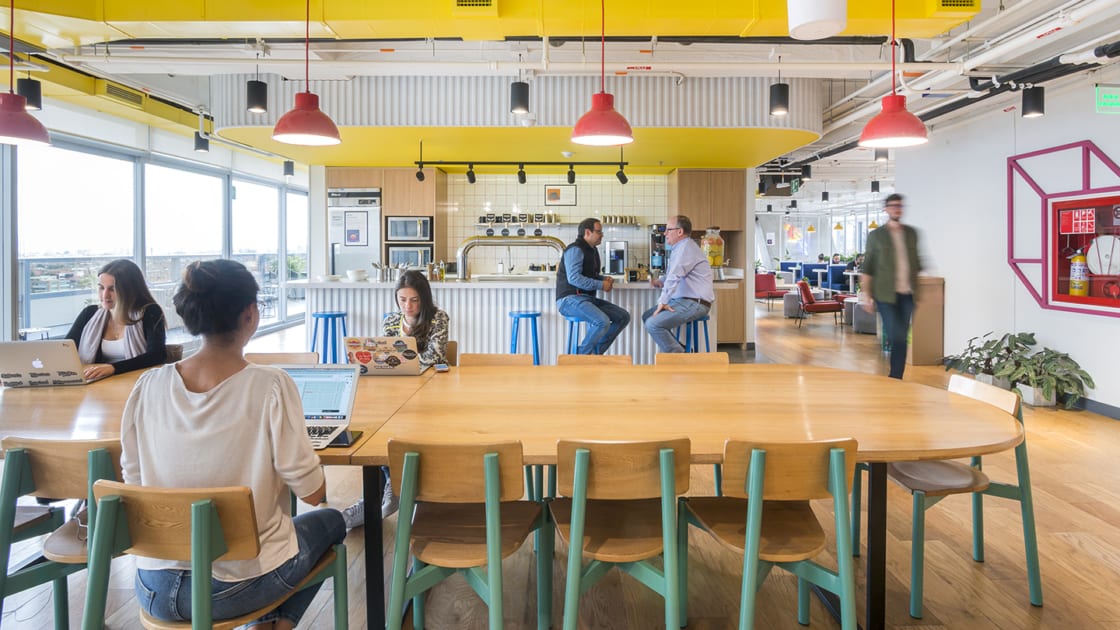The aftermath of the COVID-19 pandemic brought about a significant transformation in the traditional concept of work, prompting professionals to rethink their ideal work settings. In today’s dynamic work environment, individuals are presented with a multitude of options, each offering unique advantages and challenges. Traditional offices, once synonymous with stability and routine, now face competition from the allure of remote work and the collaborative environment of coworking spaces. In this comprehensive analysis, we will explore the nuances of traditional offices, remote work, and coworking spaces, examining how they have adapted in response to the challenges posed by the global pandemic. Whether you prefer the structure of a traditional office, the flexibility of remote work, or the collaborative atmosphere of a coworking space, this exploration aims to provide insights to help you make an informed decision aligned with your evolving needs in the post-COVID era.
Traditional Offices:
Traditional offices are physical workspaces with a fixed location, where employees gather to work within a structured schedule. This model often follows a hierarchical structure, with designated roles and set hours. In-person collaboration is a key feature, facilitating immediate communication and a sense of routine. Supervision is direct, with managers overseeing employees within a dedicated office space.
Pros:
Structured Environment: Traditional offices provide a stable and structured work environment, ideal for professionals who thrive in routine.
In-Person Collaboration: Face-to-face collaboration fosters immediate communication and quick decision-making.
Company Culture: The physical presence of colleagues promotes a strong sense of company culture and camaraderie.
Cons:
Limited Flexibility: Traditional offices may lack the flexibility required for today’s dynamic work landscape.
Commute: Commuting to a fixed location can be time-consuming and contribute to work-related stress.
Overhead Costs: Managing office space incurs additional overhead costs, which can be burdensome for smaller businesses.
Remote Work:
Remote work, or telecommuting, involves professionals performing their job responsibilities from a location of their choice, typically outside a traditional office setting. This approach offers location independence, allowing employees to work from anywhere with an internet connection. Remote work emphasizes flexibility in work schedules, relies on digital communication tools for collaboration, and measures performance based on results rather than the traditional 9-to-5 model. Commuting is minimized or eliminated, contributing to reduced stress and associated costs.
Pros:
Flexibility: Remote work offers unparalleled flexibility, allowing professionals to design their workday around personal preferences.
Cost Savings: Both employees and employers benefit from reduced commuting costs and overhead expenses associated with office space.
Work-Life Balance: Remote work promotes a healthier work-life balance, enabling individuals to integrate their personal and professional lives.
Cons:
Isolation: Remote workers may experience feelings of isolation and a lack of social interaction.
Communication Challenges: Collaborating with colleagues can be challenging, especially when relying on digital communication tools.
Potential Distractions: Home environments may introduce distractions that impact productivity.
Coworking Spaces:
Coworking spaces are shared work environments that bring together individuals from different companies and industries. These spaces offer a dynamic alternative to traditional offices, fostering collaboration, innovation, and flexibility. In coworking spaces, professionals can choose their workspace based on their preferences, collaborate with others in a communal setting, and benefit from a sense of community. This model combines the structure of a traditional office with the flexibility of remote work, providing a unique solution for those seeking a balance between a structured environment and the autonomy to choose their work setting.
Pros:
Collaborative Atmosphere: Coworking spaces foster collaboration and networking, providing a dynamic atmosphere for professionals from various industries.
Flexibility: Members can choose from various workspace options, promoting adaptability to different work styles.
Community Support: The sense of community within coworking spaces offers support, inspiration, and networking opportunities.
The ideal workspace depends on individual preferences, job requirements, and company culture. Traditional offices offer stability, remote work provides flexibility, and coworking spaces blend community and innovation. Assessing your priorities and evaluating the pros and cons of each option will guide you toward a workspace that aligns with your professional goals and lifestyle. Whether you thrive in a structured office, value the autonomy of remote work, or seek the collaborative energy of a coworking space, the choice is ultimately yours.









